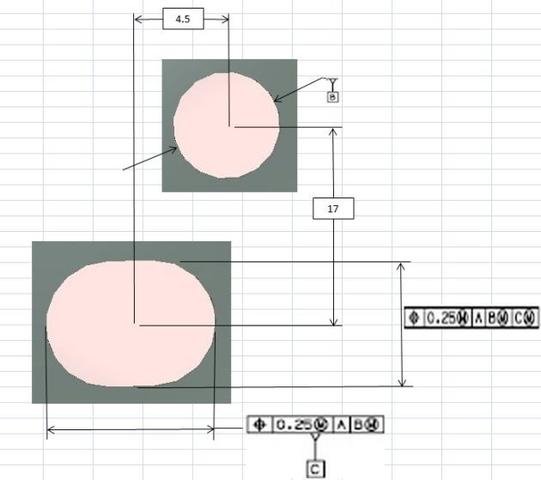Your Products have been synced, click here to refresh
Your Products have been synced, click here to refresh
Are the diameter and slot in line? If so, I would level to Datum-A, use Datum-B and datum-C to create your alignment line and zero to Datum-B. then use the two radius for length position and the sides of slot for width position.
Using the slot for alignment is way too small and will affect your measurements.
Base on CAD none of the slot axis are squared with the CS, based on the drawing axis along the length is in X, hole is above and to the right of the center of the slot
If the length is parallel to X, then the slot is an offset as Matt wrote.
So, you need to find the center of the slot length (I would measure as a square slot also). Then create an offset line from B and C, with C offset by the basic. Use that for rotation.
Or, as Matt wrote, use iterative. But then you will have to measure the slot and construct a cast point on the slot, as PC-DMIS will not allow you to use the slot length to rotate to directly.

| © 2025 Hexagon AB and/or its subsidiaries. | Privacy Policy | Cloud Services Agreement |